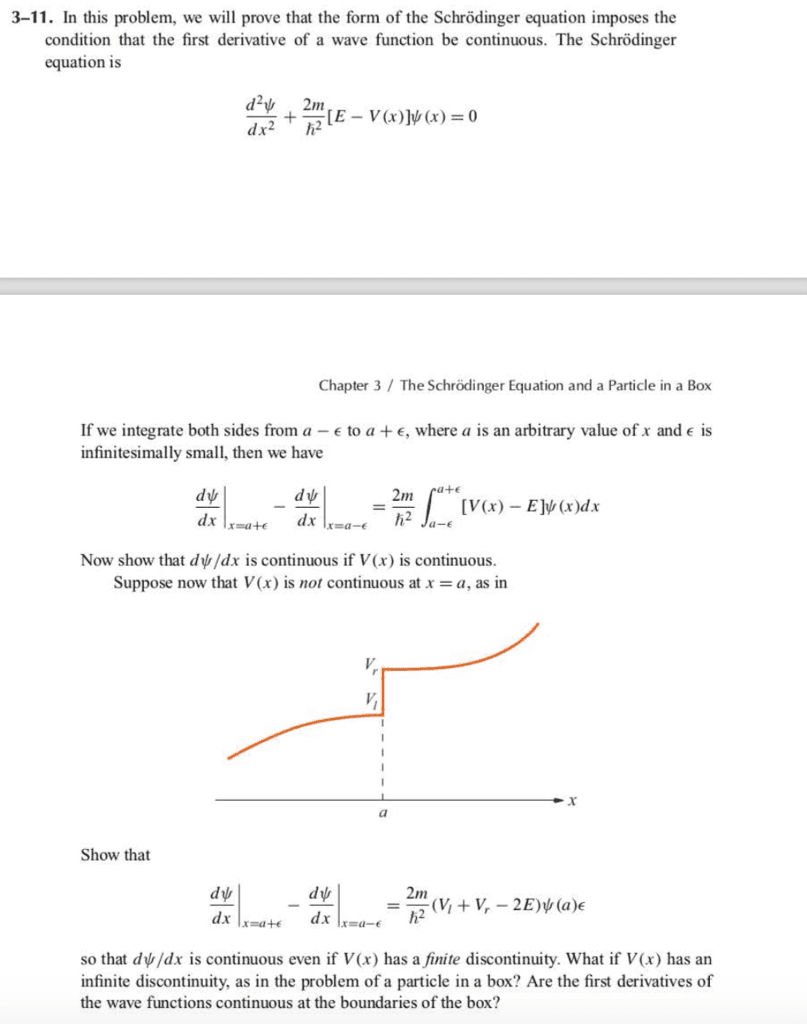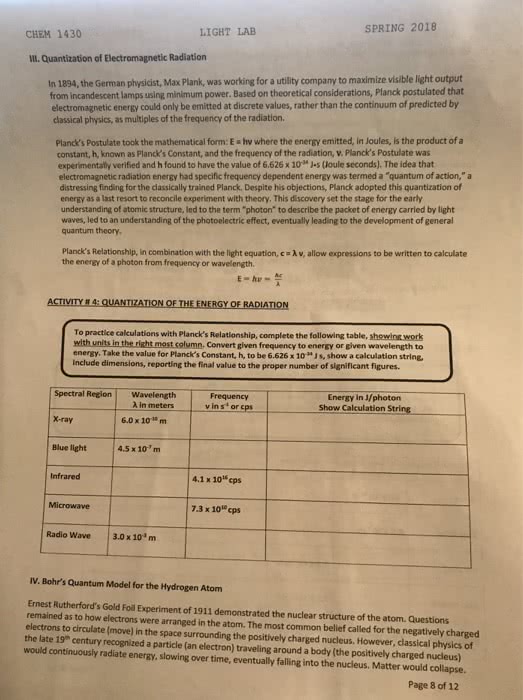CH202 Study Guide - Final Guide: Matter Wave, Partial Differential Equation, Bohr Model

Schrödinger’s wave mechanics
Schrödinger expressed de Broglie’s hypothesis concerning the
wave behaviour of matter in a mathematical form that is
adaptable to a variety of physical problems without additional
arbitrary assumptions. He was guided by a mathematical
formulation of optics, in which the straight-line propagation of light
rays can be derived from wave motion when the wavelength is
small compared to the dimensions of the apparatus employed. In
the same way, Schrödinger set out to find a wave equation for
matter that would give particle-like propagation when the
wavelength becomes comparatively small. According to classical
mechanics, if a particle of mass me is subjected to a force such
that its potential energy is V(x, y, z) at position x, y, z, then the
sum of V(x, y, z) and the kinetic energy p2/2me is equal to a
constant, the total energy E of the particle.
Thus,
It is assumed that the particle is bound—i.e., confined by the
potential to a certain region in space because its energy E is
insufficient for it to escape. Since the potential varies with
position, two other quantities do also: the momentum and, hence,
by extension from the de Broglie relation, the wavelength of the
wave. Postulating a wave function Ψ(x, y, z) that varies with
position, Schrödinger replaced p in the above energy equation
with a differential operator that embodied the de Broglie relation.
He then showed that Ψ satisfies the partial differential
equation
This is the (time-independent) Schrodinger wave equation, which
established quantum mechanics in a widely applicable form. An
important advantage of Schrödinger’s theory is that no further
arbitrary quantum conditions need be postulated. The required
quantum results follow from certain reasonable restrictions placed
find more resources at oneclass.com
find more resources at oneclass.com
Document Summary
Schr dinger expressed de broglie"s hypothesis concerning the wave behaviour of matter in a mathematical form that is adaptable to a variety of physical problems without additional arbitrary assumptions. He was guided by a mathematical formulation of optics, in which the straight-line propagation of light rays can be derived from wave motion when the wavelength is small compared to the dimensions of the apparatus employed. In the same way, schr dinger set out to find a wave equation for matter that would give particle-like propagation when the wavelength becomes comparatively small. It is assumed that the particle is bound i. e. , confined by the potential to a certain region in space because its energy e is insufficient for it to escape. Since the potential varies with position, two other quantities do also: the momentum and, hence, by extension from the de broglie relation, the wavelength of the wave.


